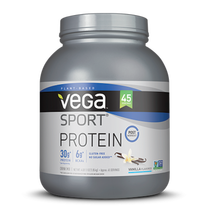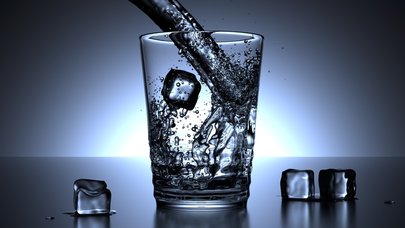Want to increase your fitness? Pay attention to your recovery!If you spent every waking minute exercising, or for that matter, even just an hour of hardcore training every day of the week, you'd end up broken instead of stronger. The reason is that you don't get stronger from training, you get stronger from the process of repairing the muscles that you worked out. When you apply resistance to your muscles, whether with bodyweight training, unconventional weight training, or standard weight lifting, you create micro-tears in the fibers of your muscles. As these micro-tears heal, they increase the size and quantity of muscle fibers, and thus your muscles grow stronger. Additionally, as you would expect, those micro-tears increase the level of inflammation in your body, with all of the resulting chemical responses. This inflammation, along with the release of stress hormones such as cortisol, cause systemic damage in the body which can result in additional health problems. At best, over-training never allows those muscle fibers to repair properly nor allows the inflammatory and stress responses to diminish. At worse you set yourself up for injury. Either way, you quickly plateau and end up not making the progress toward your goals that you want. All this is to say that recovery and rejuvenation are vital to getting stronger. 9 Ways To Optimize Your Training For Maximum Strength, Power, Endurance and Mobility. (In no particular order:)#1 Refuel your body after your workout. Your muscles need two macronutrients to refuel and recover. Protein and carbohydrates. Dietary protein gets broken down into the component amino acids by the body, and those amino acids are then transported to the muscles and resynthesized into the proteins that the body uses to rebuild and repair the torn muscle fibers. There is an optimal quantity and window within which to consume protein following your workout. As a general rule, consuming about 0.2g to 0.4g of protein per pound of bodyweight within 90 minutes after a workout will have the best effect. Carbohydrates don't do much in the way of repairing your muscles, but they do get broken down in the body and stored in muscle cells as glycogen. Glycogen is a raw ingredient in the synthesis of Adenosine Triphosphate (ATP), which is what muscle cells (and all cells) use as fuel for cellular function. After a hard workout, the glycogen has been depleted from your muscle cells and needs to be replaced. Unlike protein, you can simply consume carbohydrates according to your normal daily needs over the course of the day and you'll refuel. However, having a light carbohydrate snack prior to a workout can help give you a bit of extra energy. #2 StretchYep, stretch. I know you don't have time to stretch after your workout, and it seems so difficult and painful and you don't see the value... But stretching helps condition your muscles, increase range of motion, improves mobility and reduces muscle spasms. Static stretching, where you hold your stretches for 30-60 seconds is ideal following exercise. One thing that I notice among a lot of people is a lack of awareness of good stretching technique. If you've never been trained to stretch, I recommend that you work with a trainer or yoga instructor to learn how. #3 Self Myofascial Release and/or MassageSelf Myofascial Release (SMR) is also known as "Foam Rolling", promotes muscle relaxation and by extension, increased fluid exchange (blood and fascial fluids) to help lubricate muscles and increase range of motion. Roll the upper back, lats, chest, glutes, hamstrings, quads, calves, hip flexors, abductors and adductors. Start off by rolling across larger swaths of muscle and fascia until you find a location that is sore or painful. Spend 30-60 seconds concentrating on each of those sore or painful areas. It may not be comfortable while you're doing it, but it will feel so much better later. A lot of research recommends against rolling the lower back or directly on the spine. To hit the muscles that run up either side of your spine, there are several options, but a "peanut" is our favorite. As for foam rollers, we like the Grid and Grid X Rollers by Trigger Point Therapy because they're well made, won't break down quickly and does the job better than almost every other roller. Regular massage also helps to reduce soreness and increase flexibility and mobility as well as contribute to emotional and mental wellness. To get the best effect for your muscles, go for deep tissue or therapeutic massage as opposed to Swedish or relaxation massage. One last SMR point to keep in mind... SMR before sleep has been shown to improve the quality of slumber, which brings us to our next point... #4 SleepScience has shown that if you don't sleep, you can expect to get fat and weak. Lack of sleep results in lower growth hormone release, higher cortisol (stress hormone) levels and decreased insulin sensitivity. In other words, not sleeping will put you into a pre-diabetic state, causing increased weight gain and health problems. On top of the physiological impact, there's the psychological element with mood being generally depressed. Together, they help reinforce each other. How much sleep do you need? A minimum of 7 hours per night is good with the ideal being closer to 8 hours per night. There are plenty of resources available to help you get an idea of how you're sleeping and to help you sleep better. The main way to help make sure you get enough sleep is to consistently go to bed at the same time each night and wake up at the same time each morning. You may need black-out curtains and either ear plugs or even better, a white noise generator (I use the "White Noise" app by TMSoft for Android and iOS). #5 Meditation Meditation can have amazing effects on both your body and your mind and doesn't have to be a torture session. One basic method is to do "shape breathing". In this case, I'll describe "Box" breating. Get comfortable, start 4/4/4/4 breathing--Breathing in through the nose, filling the belly until it is distended to a count of 4. Hold your full belly and lungs for a count of 4, then exhale through your mouth for a count of 4. Finally, hold with empty lungs for a count of 4. Then repeat.) Your mind will do what minds do...wander. So, whenever you find your mind drifting into thoughts, just bring your attention back to your breath and start again. Start out at 2 minutes per day (set a timer on your phone with a nice soft chime) and increase from there. It's normal for the mind to wander, but you want to simply not go with it. Witness your thoughts like clouds floating across the sky rather than being a part of them. The idea is to witness more and engage less with the wandering of your mind, and be aware of when you're doing both. Just like sleep, meditation seems to work best if you do it at the same time every day and in the same location. Deep, 4/4/4/4 breathing and meditation will promote relaxation, a positive mental outlook and increased blood oxygen which will help lower the pH in your cells. If you'd like feedback on when your mind is wandering, the Muse Headset is our go-to biofeedback device to improve meditation . If you're a bit more advanced in your meditation practice, you may be interested in the Lifeflow meditation tracks. Using sophisticated brainwave entrainment technology, these audio tracks channel your brain wave frequency into specified ranges, improving the depth and ease of meditation. #6 Active Recovery ExerciseGive yourself recovery days between your hard-hitting workout days. But, don't just sit around. Walk, do some calisthenics, battle ropes and slam balls are great. Of course, yard work, house cleaning, and the like are great ways to get your light workout in and being productive in your life too. The idea with the light workout is to increase the blood flow to the muscles you've been training in order to provide nutrients to the cells as well as flush away metabolic waste products. Aim for a light 30 minute workout with your Target Heart Rate being around your 50% Heart Rate Reserve (HRR). To get to the right Target Heart Rate, you'll need to do some calculations. You will need the following values:
MHR According to Lifehacker, Maximum Heart Rate can be best calculated as follows:
RHR Ideally, check your heart rate everyday for a week before you get out of bed in the morning. Then take the average of those values. Of course, lots of fitness monitors will also calculate your RHR. HRR HRR = MHR - RHR. Target Heart Rate Target Heart Rate = (HRR x %intensity) + RHR. Again, go for about 50% intensity. Also, it's a good idea to keep track of your RHR because it can be an indicator of over training. If you see your RHR going up consistently, and over 10% of your baseline, dial back your workouts until your RHR is back within your baseline range. #7 Rest Day(s)One day per week, give your body a rest to allow your stress levels to lower (from life and from all the exercise you're doing). This is a great day to do more sedentary and super low intensity activities. A stroll down the trail or on the beach, walking the dog, preparing food for the days ahead, getting massages, meditating, etc. are all good ways to give your body a rest. Of course, since you're not burning the usual number of calories, it's important to eat appropriately on this rest day rather than over-fuel your body, which will counteract all the great work you're doing. #8 Nourish Your BodyA well nourished, perfectly-fueled body has what it needs to generate muscle, burn fat and provide energy for all the activities you want to do. Focus on eating lots of vegetables, especially the dark green leafy kind. Get plenty of protein (0.4g-0.8g of protein per pound of body weight per day), healthy fats (olive oil, hemp seed oil, flax seed, avocado) and moderate amounts of complex carbohydrates (whole grains, brown rice, natural whole fruits.) By staying away from fast, low quality, high-calorie, low-nutrient, refined foods, you'll feel better, look better and have the energy to power you through your workout and everything that gets thrown at you during the day. #9 Hydrate Water! Drink lots of it. Drink between 64 oz and 1 gallon (2-4 liters) per day. Everyone know you need water to survive, but you also need it to thrive. Studies have shown that even low levels of dehydration can result in a significant decrease in your power output. Additionally, water will help you feel fuller, helping you to reduce your caloric intake. Diuretic liquids like coffee, soda and tea, which make you need to urinate more than you consumed, do not count toward your daily goal. Sweetened beverages also don't count because of the negative effect they have on your body. Tips to make sure you drink enough:
(Bonus #10) ElectrolytesElectrolytes (sodium, potassium, calcium, magnesium and phosphate) are mineral salts that your body needs for proper cellular activity and for nervous system function. They also regulate the amount of fluid retained by your body, including blood volume. Additionally, if you find you're getting cramps after workouts, it may be a sign that your electrolyte levels are low. Vega Sport Electrolyte Hydrater tastes good and isn't filled with artificial flavoring or sweeteners. Also, Sport Legs has been a big help in reducing and eliminating cramps following long training sessions.
1 Comment
|
Personal Trainer, Health Coach, Skydiver, Mountain Biker, Road Cyclist, Vegan, Medical Device Systems Engineer. |

 RSS Feed
RSS Feed